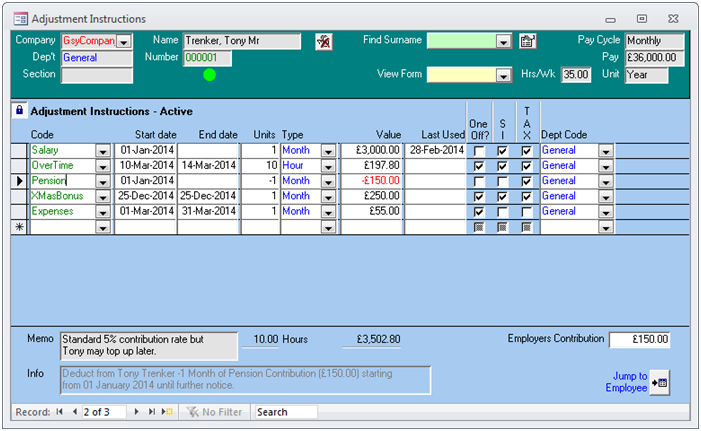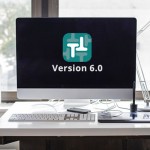Choosing Computerised Payroll Software
You have probably heard it said that a company’s most valuable resource is their staff and that investment of time and money in people can bring great rewards for the company, the staff themselves and the bottom line! So why is it that the job of paying your employees is such a tedious and unfulfilled activity?
Processing a payroll requires patient data entry, detailed knowledge of local Tax and Insurance procedures and a variety of lengthy forms. If you have ever read through the official Employers’ Guide, you will appreciate the great range of tasks you are required to do. For example, TT Software has developed an Isle of Man payroll and the various Guides supplied were 3 inches thick in all!
Most requirements are easy to come to terms with through the simple fact that they are repeated week after week and month after month (and quarter after quarter). One can be lulled into a false sense of security, however. Many a time I have seen someone trip over a simple thing while tediously plodding through the weekly payroll: A common mistake is to think that a week starting on the 12th of a month ends on the 19th of that month. At first glance, on a busy day, perhaps even a Friday afternoon, this can seem correct, because there are seven days in a week so just ‘add seven’. Of course, the week should end on the 18th of the month.
When the fundamentals have been learnt, it’s just a matter of remembering all the exceptions and extra little things that can happen. For example: An employee changes their SI card type during a quarter or the end of the year arrives and a 53rd week is suddenly required.
Of course, on top of all the official requirements, will be your own needs, such as; paying someone early because they have left; remembering to do a pay review at the right time for the right amount or; realising when a Right To Work expires or someone’s probation period ends.
So we see that running a payroll manually starts with a steep learning curve and evolves into a tailored system that must be able to handle exceptions and special events. This can be a costly project but once established can often run fairly smoothly in the right hands. I have seen a number of fantastic and very clever spreadsheets that do a wonderful job of processing a payroll. Often these systems have been refined over a period of several years to be fairly comprehensive, although they are often complicated to use with one false move causing the whole system to fall over. But for all this ingenuity, consider what happens when the original payroll genius leaves, retires or moves on to other things: Someone new has to learn the old system and spend a lot of time with the original payroll clerk; picking their brains and clawing their way through a strange system.
A manual payroll therefore incurs start-up costs, extensive set-up and refining costs for a period of 1 to 2 years (in my experience) and then a double dose of training time when the original payroll clerk leaves. This whole process can cost a company up to four times as much as a tried and tested approach and this quadruple cost can be applied many times over as a company changes staff who each try their hand at the job with a different system.
Payroll software would seem to provide the answer; but how many times have you used a program that is as complex to learn as the problem it is trying to help you with? Some software takes just as long to fiddle with as using a paper system and then at the end of it all does not provide you with the information you need. After all that, you probably have accounts or banking software that requires all the data to be entered again, usually in a different format just to keep you on your toes!
What you need is software so well designed that it seems overly simple, and yet is somehow flexible enough to handle all the exceptions plus the ability to adapt to new conditions. Any data should be entered just once. If it were possible to create a single screen for all employee details and a single screen for every conceivable payroll entry and a range of buttons to give you printed payslips, analysis reports, links to accounts and banking software and quarterly returns, then you would have a system with minimum start-up and running costs. It could then be said that the system was ‘user-friendly’ or ‘easy to use’.
But then all salespeople say that their software is easy to use, but what does that mean? Usually it means that they can use it easily, but it should mean that others can learn it quickly and be able to apply that knowledge to perform other tasks on their own.
The screenshot shows how such a flexible payroll screen could look. When the user has learnt how to enter a single line, they can use it to do anything:

Good software will reduce your costs and increase your ability to run a successful payroll. Try to find a company that will not tie you down for a whole year, has minimal start-up costs, provides free upgrades and has expert and dedicated development and support staff.
Finally, good payroll software can actually be a joy to use. This otherwise tedious and unfulfilled job can be transformed into the sincere activity of rewarding your staff that it should be.







Leave a Reply